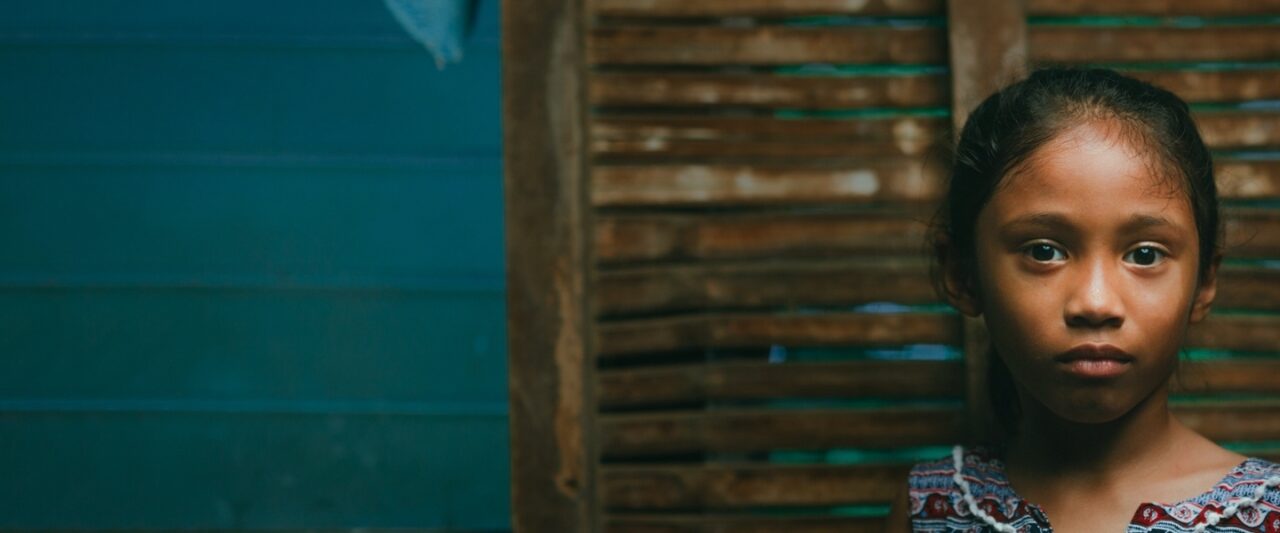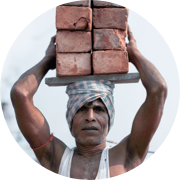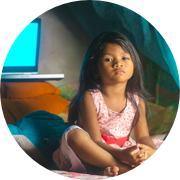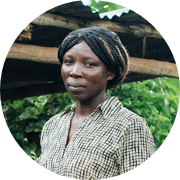
The Global Fight Against Trafficking and Violence
The Problem: Everyday Violence
The threat of violence is part of everyday life for people in poverty. It’s as much a part of poverty as hunger, disease or homelessness. This is not the violence of war or genocide, but common, criminal violence that is already against the law—crimes like modern slavery and violence against women and children. An estimated 40 million people are victims of modern slavery, also known as human trafficking, and over 5 billion people live outside of the protection and benefits of the law.
In many communities, criminals expect no consequences for these crimes. Laws are not effectively enforced, so criminals continue to enslave and exploit people who are poor. People in poverty are uniquely vulnerable to this violence, because while their wealthier neighbors can pay for security and safety; they cannot.
Modern-Day Slavery is Prevalent Across the World
Source: Global Slavery Index, 2016
More people are trafficked today than any other time in history. Modern-day slavery is prevalent and widespread and generates almost $150 billion a year at the expense of vulnerable populations.
The Role of the U.S. Government in Combating Modern-Day Slavery
Since the passage of the Trafficking Victims Protection Act (TVPA) in 2000, the U.S. government has carried the torch as a global leader in the fight against human trafficking. Operating under the “3P” paradigm — prosecution, protection, and prevention — as framed by the UN’s Palermo Protocol and the TVPA, the U.S. has built and expanded capacity in the federal government to combat modern-day slavery domestically and internationally. The State Department’s Office to Monitor and Combat Trafficking in Persons (TIP Office) plays an essential key role in advancing this paradigm through programmatic and diplomatic means, and by directing anti-trafficking response across the federal government.

Prosecution
Effective law enforcement is a key pillar of the U.S. government approach to fighting trafficking. Accountability for offenders is key in stopping the cycle of violence and deterring others from abusing vulnerable people. The annual Trafficking in Persons (TIP) Report analyzes the efficacy of governmental efforts to properly investigate and prosecute cases of trafficking around the globe.

Protection
U.S. government anti-trafficking efforts prioritize the identification of victims, as the first step in providing appropriate support to survivors of this crime. Protection of victims and survivors requires effective partnership between law enforcement and social service agencies to provide case management, housing, healthcare, legal assistance and educational or vocational opportunities and other support for survivors.

Prevention
Prevention efforts help stop the crime of human trafficking from occurring in the first place. Amending or revising laws, monitoring supply chains with private sector partners, and focused implementation of existing legal protections are examples of key efforts to prevent vulnerable people from becoming victims of trafficking.
Understanding the Issues

Modern-day slavery
Millions of men, women and children are enslaved in brick kilns, brothels, garment factories, private homes and other contexts. Also known as “Human Trafficking.”

Sex trafficking
A form of modern-day slavery in which someone deceives and sexually exploits another person for a profit in establishments, private networks or over the internet.

Online sexual exploitation of children (OSEC)
A form of sex trafficking that refers to the live streaming of sexual exploitation of children over the internet to predators across the world.

Violence against women and children
Because women and children around the world often are not effectively protected by the law, they are vulnerable to sexual and domestic violence.
A Closer Look at International Justice Mission
International Justice Mission (IJM) is a global organization that protects people in poverty from violence. Our team of lawyers, social workers, community activists and other professionals work alongside local authorities in 21 program offices in 13 countries to combat modern-day slavery, violence against women and children, and other forms of abuse against people experiencing poverty. IJM works to rescue and restore victims, hold perpetrators accountable, and help strengthen public justice systems.
Founded in 1997, IJM has now grown to more than 1,000 staff members—95% of whom are nationals of the countries where they work. IJM’s work has been recognized by the U.S. State Department, the World Economic Forum and leaders around the globe, as well as featured by The Guardian, The New York Times, Reuters, BBC and CNN, among many others.